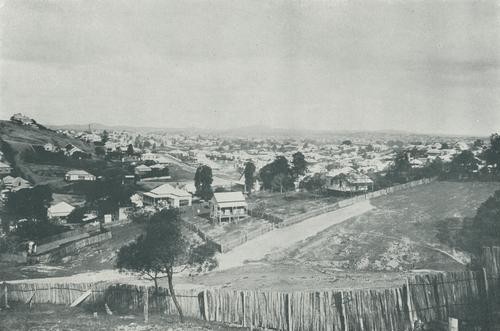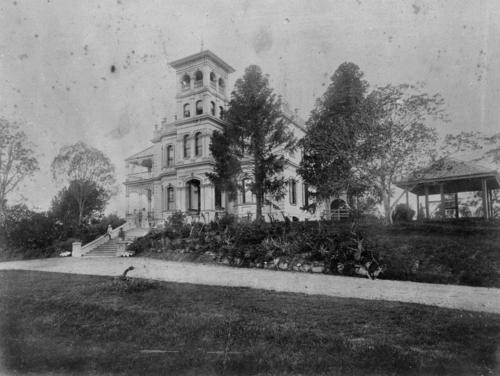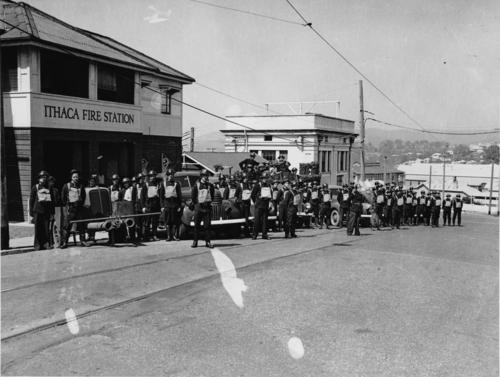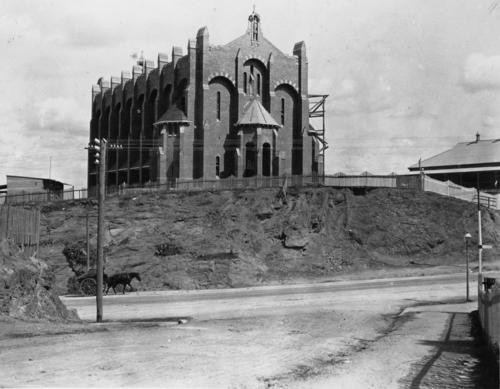Another of Brisbane's inner suburbs, undergaining significant development and change, is Paddington. As with other Brisbane suburbs, the area has an interesting history.
It is believed that the suburb is named after the London locality of the same name. The area was originally referred to as being at the back of the jail, being a reference to Brisbane's main jail which was located close by on Petrie Terrace.
In the early period the area was well known as a haven for goats, which roamed across the hilly landscape.

Brisbane suburb of Paddington from Enoggera Terrace, ca. 1890, John Oxley Library, State Library of Queensland, Image No: APE-047-01-0013
Some early settlers and businesses include:
- Joshua Jeays who first arrived in 1853. Jeays built Bardon House as his residence in 1883.
- 1876 – Ithaca Creek Store operated by J. Moran as a cash grocer and general provision store (1876). This store was located on Waterworks Road near Enoggera Terrace.
- J. Wright's store on La Trobe Terrace (1880).
- John Verrall, general merchant, was operating a shop on Given Terrace, known as the Cash Store (1885).
- J. McNab & Sons, Coach Builders.
- Charles and Sara Dean operated a second hand shop in Given Terrace (1911).
- Caxton Street Hall – built in 1883 by the Loyal United Brothers Lodge. During its history, the hall has served as an Oddfellows Friendly Society Lodge (1884-1916), a clothing factory (1909-38) and a Labor Party Hall (1928-99). The Oddfellows were an English working class friendly society which flourished in the period following the Industrial Revolution. The focus of the society's activities was community welfare. The hall was designed by Richard Gailey.
- Paddington Cemetery/s – established 1862, comprising a number of separate cemeteries, including Episcopalian, Roman Catholic, Jewish, Wesleyan, Baptist and Congregational. The cemetery was closed in 1875 and thereafter fell into disrepair. In 1910, lobbying commenced to have the graves moved and the area to then be reserved for public purposes.
- Fernberg. Constructed by prominent merchant and member of parliament Mr. J.C. Heussler (1865). Due to the increasing costs of upkeep, Heussler was forced to sell the home in 1872. The Queensland Government purchased Fernberg in 1910 as the new Government House. Sir William MacGregor became the first of many Governors to live in Fernberg.

Early photograph of Government House, known as Fernberg, Brisbane, ca. 1890, John Oxley Library, State Library of Queensland Image No: 3817
- Ithaca Fire Station – opened in 1919.

Ithaca Fire Station in Enoggera Terrace, Paddington, Brisbane, ca. 1942, John Oxley Library, State Library of Queensland, Image No: 73407
- Plaza Cinema – seating 1,200.
- Paddington Cinema – seating 1,000
- Mr. W. Grimes (Baptist) commenced a Sunday School in Petrie Terrace (1867). The first Baptist Church was built in 1869.
- The Mortuary Chapel (Church of England) in the Paddington Cemetery was granted independence from the city church in 1873. This chapel became Christ Church, Milton.
- the first Methodist Church was built in Caxton Street in 1877.
- the original Enoggera Terrace Presbyterian Church was opened in 1885.
- St. Brigid’s Catholic Church was built in 1879. The building was demolished in 1913 with a new church being built on the same site.

Construction of St Brigid's Church, Red Hill, Brisbane, 1914, John Oxley Library, State Library of Queensland, Image No: 196398
Some important dates in Paddington's history and development include:
- 1860s – there was a rumour that gold had been discovered in the Paddington area. Two shafts were sunk, one in the Paddington Cemetery, but no gold was found.
- 1868 (23 March) – Petrie Terrace State School was established.
- 1895 – Post Office opened in Given Terrace.
- 1898 – a tramline was laid down, linking Bardon to the city. This acted as an impetus to the residential boom that occurred in Paddington at this time.
- 1915 – Paddington Tram Depot constructed.
Comments
Your email address will not be published.
We welcome relevant, respectful comments.